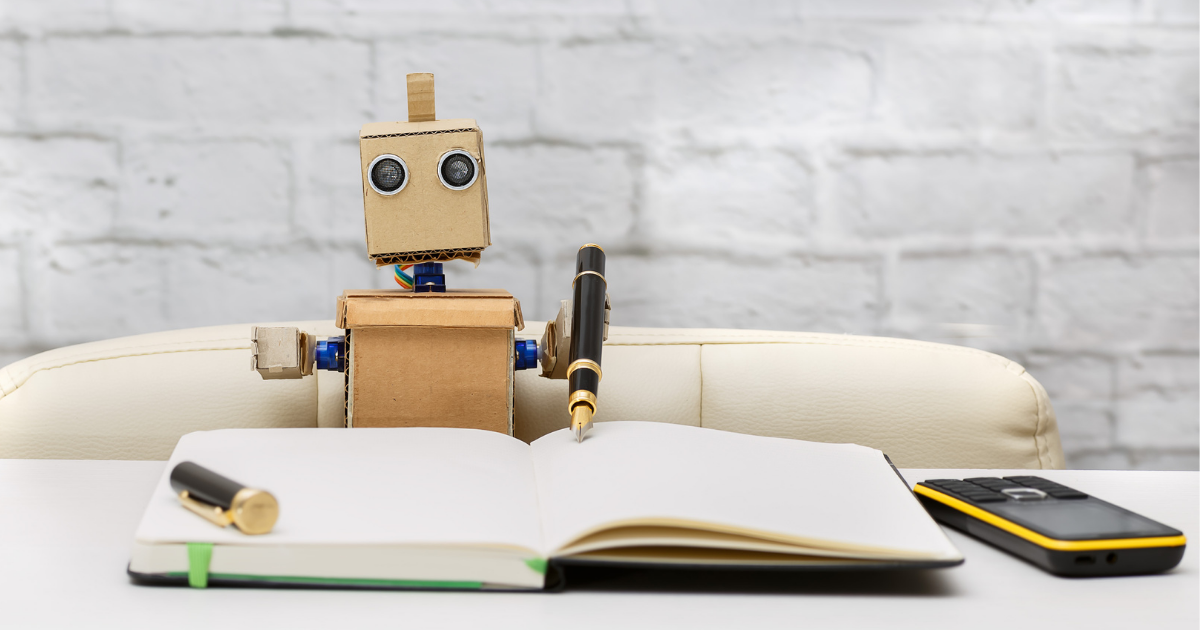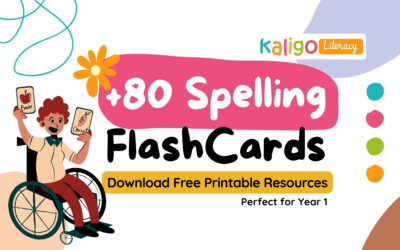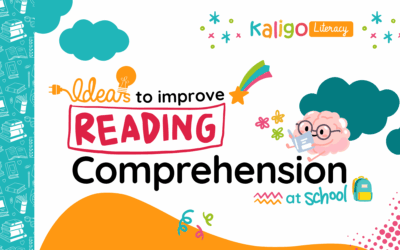With the rise of ChatGPT, Artificial Intelligence has gone from being a technology of the future to a real issue for society. Kaligo has been working on AI for education for the past 10 years and in this article we have chosen to reveal how it works.
The impact of AI and ChatGPT in Education
Few innovations have been in the news lately as much as ChatGPT. The chatbot by the American company OpenAI allows users to hold conversations that are almost identical to human interactions. Five days after going live, it had already counted more than one million registered users and has now reached 13 million users a day. The rapid development of such tools raises some concerns. How far can and should artificial intelligence (AI) go? How will it influence our daily lives; how will it affect our jobs, our relationships with others, our education?
It is true that Artificial Intelligence is already being used in a growing number of fields and disciplines; classrooms are increasingly equipped with tools such as ChatGPT. Some American universities have gone so far as to ban ChatGPT from their campuses, in an effort to ensure that students continue to write on their own.
Nevertheless in the UK, the Russell Group, which represents prestigious universities such as Glasgow, Manchester, Oxford and Cambridge, has adopted the “ethical” use of Chat GPT into their teaching and assessment methods. They emphasize that “incorporating generative AI tools into teaching and assessments has the potential to enhance the student learning experience, improve critical-reasoning skills and prepare students for the real-world applications” of generative AI technologies.
While Steven Spielberg’s blockbuster might spring to mind when discussing AI, and the European Parliament wants to better regulate its use, AI generally remains a mystery. How does it work? What is behind it? How safe is it?
For the past 10 years, Kaligo has been working to provide real-time AI feedback to students, and their teachers, as children learn to handwrite. In today’s article, we invite you to take a closer look and see what it’s all about.
What is AI exactly?
The term “artificial intelligence” covers many different notions. Researchers are still debating a single, comprehensive definition. The definition closest to our own would be that AI is “the artificial reproduction of the cognitive capacities of human intelligence, for the purpose of developing software or machines capable of performing functions normally associated with human intelligence”.
The defining element of Artificial Intelligence is its ability to analyze and identify aspects of a conversation, an image etc. and, on this basis, propose a tangible response (an answer to a question, improvement to a text, etc.). The AI’s response is highly dependent on what the user has previously indicated.
Another feature of AI is its ability to learn from previous experiences. The more information fed into the AI, the more accurate its responses will be over time. However, this can only be achieved if the user gives feedback (correct, incorrect, appropriate or not, etc.) on what the AI shows.
AI is characterized by its capacity to react and adapt to prompts, subsequently reusing its knowledge for other requests. In this respect it establishes a parallel with the cognitive ability until now associated with human intelligence.
How does Kaligo’s AI help students learn to write?
To understand how the AI behind Kaligo helps students learn to write, we first need to understand how it was built. Kaligo’s AI is based a three-step process:
- Planning the content of the AI through a preliminary study: Kaligo was developed for more than 10 years with and for teachers. Each new AI is therefore based on specific localised teaching methods, content is developed and validated with teachers.
- Compilation of AI content through data collection: once the letter templates to be fed into the AI have been established, we work with children from our partner schools so that their writing samples can be evaluated by our IT development technicians. In the French version of Kaligo, more than 100,000 students’ writing samples were processed.
- Validation of the AI through a test phase: as soon as the AI is completed, the schools that participated in its development test the new version over a course of weeks. This is where it becomes clear whether the AI meets the teachers’ expectations or if changes still need to be made.
In this way, AI recognises not only the letters children learn, but also the exact way they write them. Deviations and errors can thus be identified.
This complex AI construction enables Kaligo to help students write in two ways: firstly by automatically detecting errors and secondly by autonomously creating personalized learning paths.
Please note: All data used by Kaligo’s Artificial Intelligence remain anonymous and is under no circumstances shared with third parties. All Kaligo work processes are RGPD compliant and secured by a data processing agreement. We are a French company and secure all our data on French territory. We are committed to a strict data processing and protection policy in order to collaborate effectively with bodies such as the French Ministry for Education or the Grand Duchy of Luxembourg.
Kaligo’s AI error detection process in 3 phases
The AI analyses each letter individually according to a defined process in 3 phases.
The following example illustrates these steps: At the beginning of the exercise, the child is shown the word “SCHOOL”. Each letter is read separately, in accordance with the teacher’s chosen pattern. The student is then allowed to write freely as he/she wishes. Kaligo’s AI then analyses this letter and gives the child appropriate feedback.
Kaligo is able to analyse 4 components of writing: pen lift, stroke direction, position of the letter between the lines and writing order.
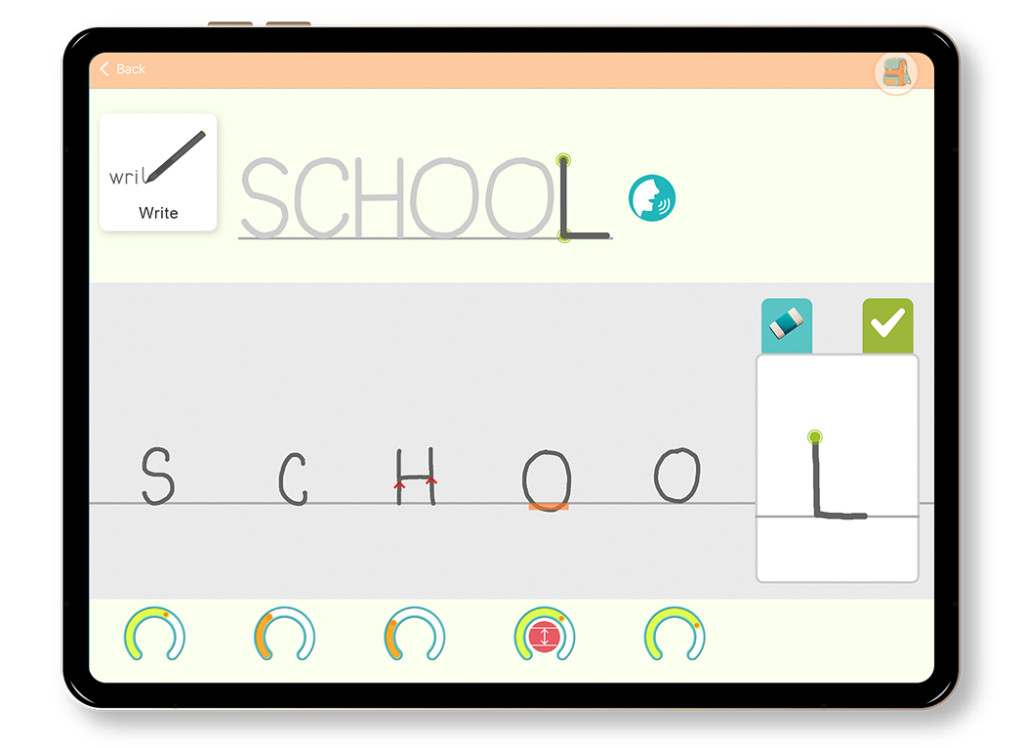
- 1st stage of analysis:
- Was the letter written correctly?
- 2nd stage of analysis: evaluation of the letter
- The letter is correct: how well it was written (here S, C and O)
- The letter is incorrect: where is the problem? (here H and O)
- 3rd stage of analysis: feedback
- The letter is correct: a green feedback with or without a star is displayed.
- The letter is incorrect:
- Either it is another tolerated model: the feedback will be problematic but less severe
- Or there is a specific problem (direction, shape, etc.): orange or red feedback is displayed
Based on this analysis, the pupil can then practice writing one or several letters again, if necessary.
But how does Kaligo’s AI know what is right or wrong?
This involves extensive fieldwork collecting thousands of handwriting samples at schools. Our developers then process the samples in order to build the AI engine. In this way, Kaligo teaches the AI to know whether the written letter matches the model letter or not. A student who writes “A” as below receives positive feedback; the AI has recognised that the student’s letter matches the expected letter.
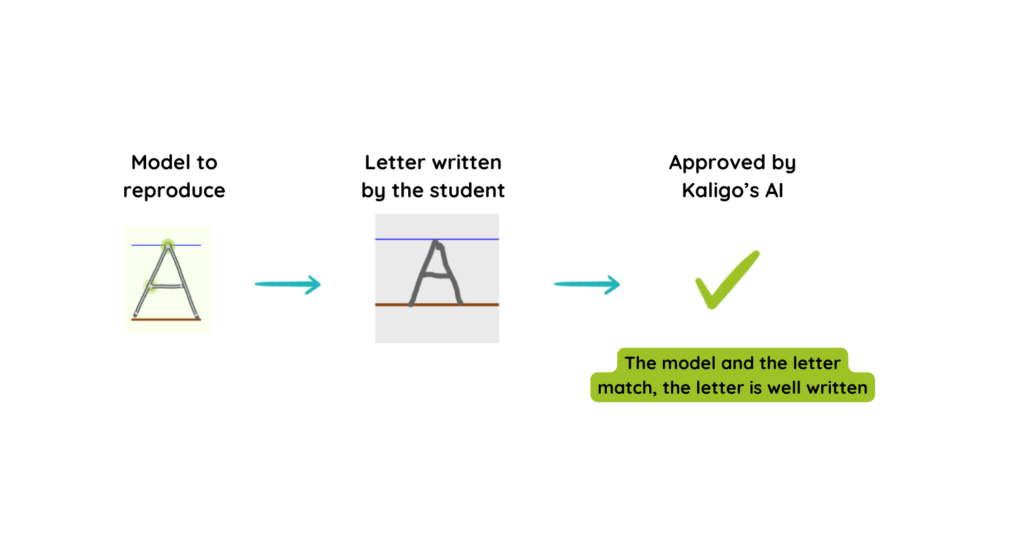
Appropriate feedback is given if the student writes a letter (i) in a tolerated version, differing somewhat from the model displayed:
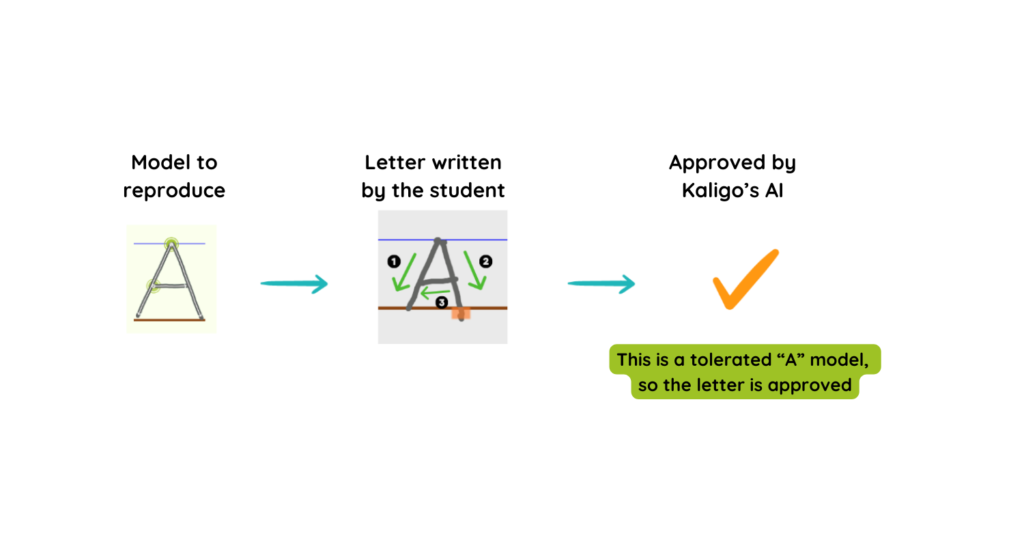
Incorrect
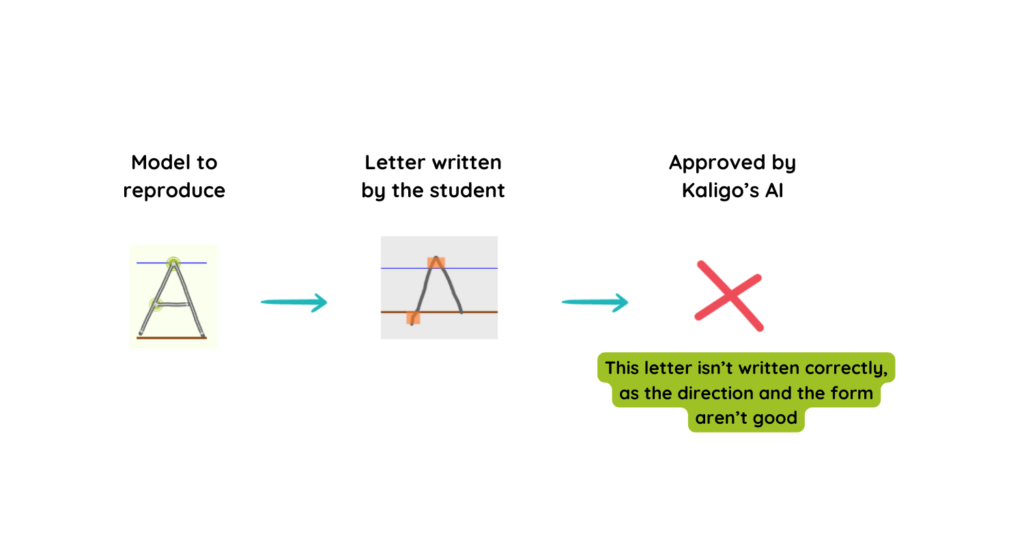
This analysis is carried out letter by letter until the whole word is written. In simple terms, the analysis of the letter “A”, for example in the word “CAT”, means this:
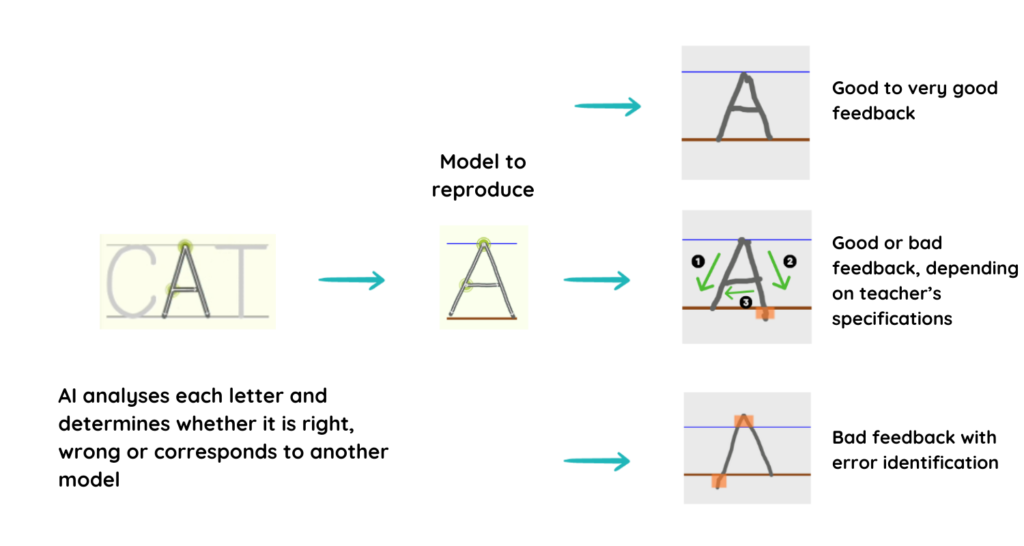
Creating personal learning pathways for pupils to progress at their own pace.
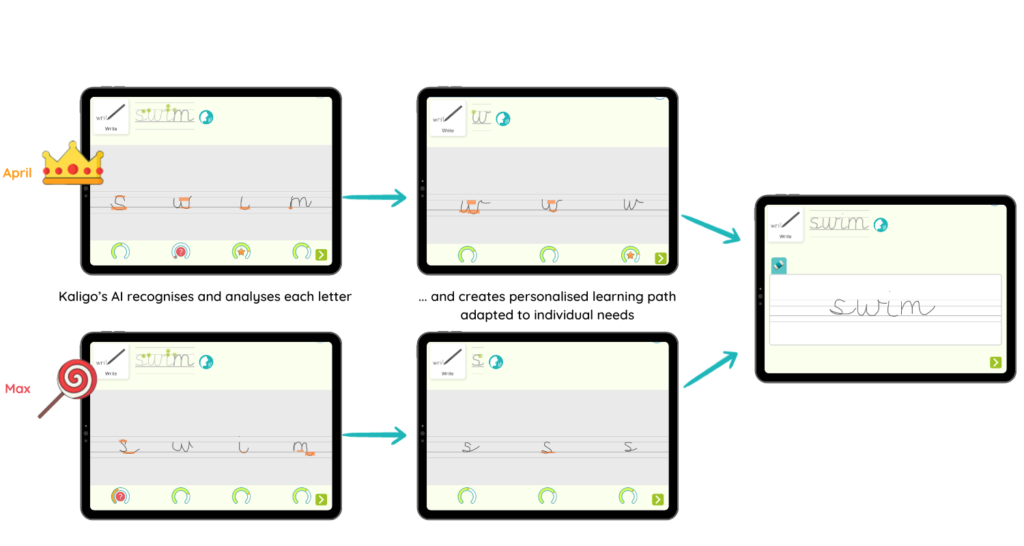
True to the characteristics of AI, Kaligo is not only able to recognise students’ mistakes, but also to take them into account to propose a personalised learning path for the child. This sequence evolves in real time to the student’s learning needs, as illustrated in the example below. Here, two pupils, April and Max, worked on the same word “swim” in cursive:
The AI was able to recognise that not only the letter ‘s’ and ‘w’ represented a difficulty for the children, but also which letter each child needed to practice again.
Thanks to the AI’s intervention, April and Max are able to continue working on the specific areas where they had difficulties. The AI builds personal learning paths and students can focus all their attention and energy on the letters they have not yet mastered.
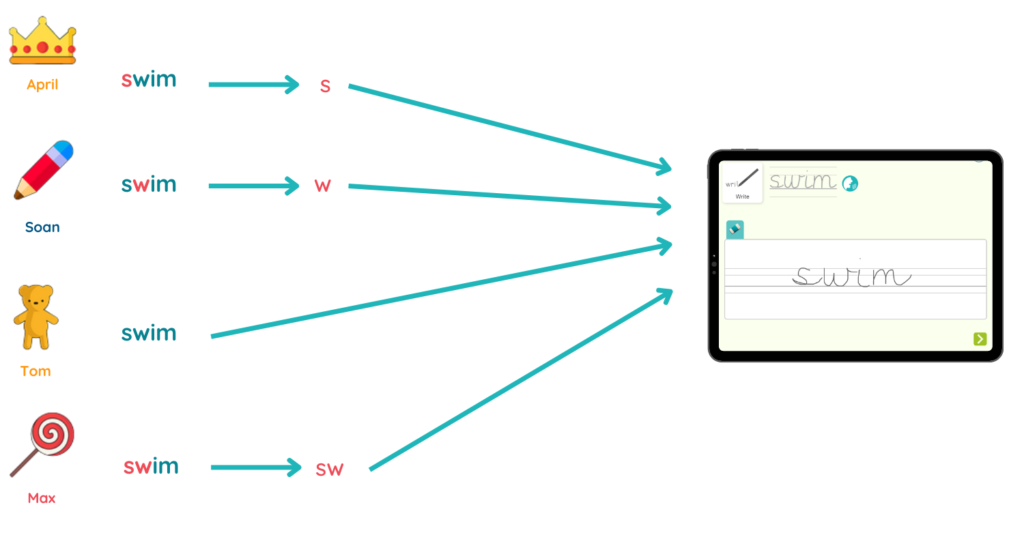
With AI, there is also no frustration or energy spent practising letters that have already been mastered. This can be the case for one letter or for none, several or the whole word, as illustrated in the example above with a larger number of students.
How does Kaligo’s AI help teachers?
Kaligo’s AI doesn’t only help students. Teachers can give the same exercises to the whole class. As each student writes, the AI detects errors and creates personalised learning paths. The exercises are automatically adapted by the AI to each student’s needs. The class works together while the AI manages the differentiation in real time.
We have been working for more than 10 years on adapting AI to the needs of schools, to enhance the learning experience and to help teachers support children in the best possible way.
If you would like to test our AI yourself, all you need is an e-mail address to sign up for a free 30-day test! Our team is at your disposal to answer any questions via the chat bubble (on the right). Once logged in, our step-by-step tutorials will help you get set up quickly and easily.

